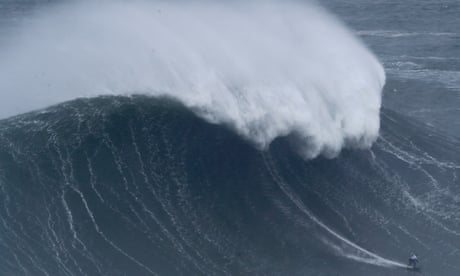
In an extract from a new book on the history of women’s surfing, Jim Kempton looks at the dangers and thrills of taking on monster waves
The media adulation and peer group deference to heroic big-wave surfers like Paige Alms, Keala Kennelly and Maya Gabeira belies the potentially lethal damage that collision with multiple stories of collapsing water can mete out on the human body.
Surfing’s biggest threat has always been the danger of injury – nearly 70 times more common than fatalities. In the rarified world of truly big waves, the bigger the wave the more danger involved. When it comes to surfing, size really does matter. Since fellow surfers increase the risk factor, respect and caution usually keeps any blatantly risky behavior out of the picture when surfing the biggest (and most dangerous) waves. But not always.
Related: Making waves: the female surfer smashing records and stereotypes
This is an excerpt from Women on Waves: A Cultural History of Surfing by Jim Kempton (Pegasus Books; publishing in the US, 6 July 2021, $29.95; UK, 19 August 2021, £22)




